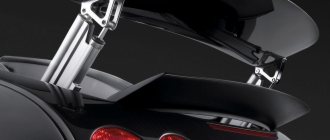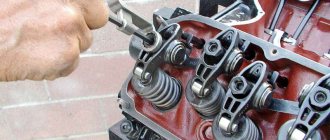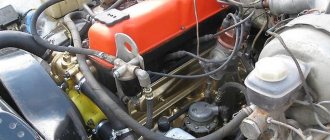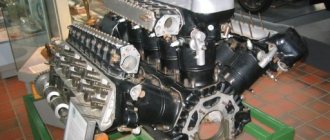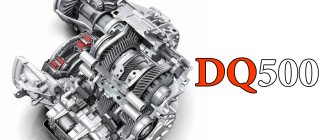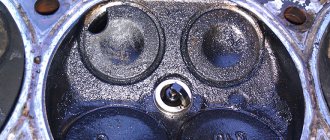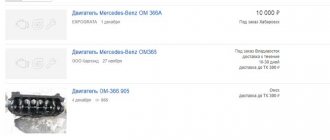The most unusual internal combustion engines (37 photos)
Today we look back at some truly rare engine configurations, both in terms of the number of cylinders and their arrangement. And let's go ascending...
Single-cylinder engine These days, single-cylinder engines are found only on mopeds, small-capacity motorcycles, auto-rickshaws and other equipment with the prefix “moto”. Meanwhile, in the 50s and 60s of the last century, the lion’s share of post-war microcars was equipped with similar simple engines. Take, for example, the British Bond Minicar with a Villiers engine: yes, even though it is three-wheeled and cramped, it has a hood, a roof, a full-fledged steering wheel - a minimum set of amenities is present. Bifurcated two-piston engine This type of engine is a mechanism in which two pistons operate in parallel in two cylinders. But there is one catch - these cylinders have one combustion chamber, a common one. In this way, more efficient combustion of the air-fuel mixture is achieved compared to conventional single-cylinder engines, fuel efficiency is improved, and power is increased. This type of engine was used in Western Europe in the pre-war period, but after World War II it became much less in demand. One of the few cars with a dual engine was the Iso Isetta, whose 236 cc engine developed 9 horsepower. V-shaped 2-cylinder engine The pride of Harley-Davidson, unlike in-line or opposed 2-cylinder engines, has not taken root in passenger cars - the vibrations from them are too great. Twin-pot V-twin engines are found only in a variety of exotics, such as the three-wheeled Morgans of the 1930s, as well as some kei cars of the early post-war period. One example is the Mazda R360 with its miniature air-cooled V2. Later, commercial vehicles B360/B600 appeared on its basis - also with V-shaped “twos”. V-shaped 4-cylinder engine Three-cylinder V-shaped engines are not found on cars (only on motorcycles, and even then rarely), but V-shaped “fours” are quite common. True, in terms of popularity they are inferior to both in-line and boxer engines with the same number of cylinders. You can find this outlandish power plant these days, for example, in Zaporozhets, LuAZ, some early versions of the Ford Transit, as well as sports cars like the Saab Sonnet or, for a second, the Le Mans winner Porsche 919 hybrid. V-shaped five-cylinder engine Now in-line five-cylinder engines are experiencing their rebirth: today they can be found not only in the middle-aged Audi 200/Quattro of the 80s, but also in the more modern Audi TT-RS. But the engineers have not yet gotten around to reviving the V-shaped “five”. In the 90s, engineers from Volkswagen came up with this unusual scheme by sawing off one cylinder from a VR6 engine - formally, the Volkswagen V5 is exactly a VR5, since the engine with a slight camber of these same cylinders has only one cylinder head. The V5, which has a pleasant voice, was installed on many Volkswagen models of the late 90s: VW Golf, Bora, Passat, and also Seat Toledo. V-shaped in-line six-cylinder engine (VR6) By the way, VR6 is also a rare configuration. And it is also found only on Volkswagen cars. The VR6 was a very low-angle V6 (10.5 or 15 degrees) that had only one cylinder head and the cylinders were arranged in a zigzag pattern. Now the engine has a controversial reputation: being installed in the most powerful Volkswagens of the 90s (Golf VR6, Corrado VR6 and even Volkswagen T4), it stands out with high torque and a velvety roar, but in the event of a malfunction it begins to devour gasoline - there have been cases when consumption increased up to more than 70 liters per 100 kilometers. Inline 8-cylinder engine Before World War II, inline eights were the favorite engines of American premium brands (Packard, Duesenberg, Buick), but at that time they were no less popular in Europe: it was with this engine that the Bugatti Type 35 won more Thousands of races around the world, it was with an inline 8-cylinder engine that the original Alfa Romeo 8C shone at the Mille Miglia and the 24 Hours of Le Mans. The swan song of the long engine was 1955, when Juan Manuel Fangio became the champion for the second time driving a Mercedes W196. However, in the same year, the famous tragedy occurred at Le Mans, when Pierre Levegh's Mercedes 300 SLR (also with an in-line eight) claimed the lives of more than 80 spectators. After this incident, Mercedes retired from motorsports for more than 30 years. Boxer 8-cylinder engine Although such engines are more common in aviation, Porsche experimented with them at one time - the Porsche 907 and 908 racing cars built in the 60s were equipped with boxer 8-cylinder engines, providing high power and a low center of gravity. Not to say that the idea was unsuccessful, but the company quickly abandoned such engines, preferring opposed sixes, but with a supercharging system. At the end of its life, the 908 - like the one in which Jost and Ickx finished second in the 1980 24 Hours of Le Mans - was already a six-cylinder. W-shaped 8-cylinder engine The W8 engine, which was installed only in the Volkswagen Passat B5+, can be thought of as two V4 engines mounted side by side at an angle of 72 degrees to each other. Thus, four rows of cylinders are obtained, for which the engine received the name W8. Before the advent of the Volkswagen Phaeton, the Passat W8 was the company's flagship sedan, developing 275 horsepower and accelerating to “hundreds” in a sports car-like 6 seconds. Boxer 10-cylinder engine Unfortunately, this idea turned out to be too cool to become a reality, although GM worked on a similar engine in the 60s, using the 6-cylinder boxer of the Corvair model as a basis. It was assumed that the new 10-cylinder engine would take its place in full-size sedans and light-duty pickup trucks from General Motors, but the project was quickly abandoned for currently unknown reasons. There were no in-line 10-cylinder engines on the cars either - unless you count heavy sea container ships as cars. Inline 12-cylinder engine In his book The Illustrated Encyclopedia of the Cars of the World, David Bergs Wise states that the only production car with an inline 12-cylinder engine was the Corona, which was produced in France in 1908. However, this does not mean that the idea did not attract other companies - for example, it is reliably known that Packard experimented with a similar type of engine. A running example was built in 1929, and Warren Packard personally tested it for six months... until he died in a plane crash. After his death, the luxurious convertible was dismantled, and the 150-horsepower unique engine was destroyed. V-shaped 16-cylinder engine With the advent of the Bugatti Veyron/Chiron, 16-cylinder engines are mostly represented only as W-shaped, but this was not always the case - throughout the last century, 16 cylinders were almost always lined up in two rows. Auto Union Type A, Cadillac V16, Cizeta V16T are just a few examples of V16 cars. But such an engine could well appear on modern Rolls-Royce cars - a running prototype of the Rolls-Royce Phantom Coupe with a 9-liter V16 was presented in the film “Agent Johnny English: Reboot.” Boxer 16-cylinder engine Obviously, such an engine could only be created with an eye to motorsport. However, the irony is that 16-cylinder boxer engines were never raced: the Porsche 917 prototype with 16 cylinders was consigned to the shelf of history almost immediately, opting for 12 “pots”, and the new Coventry Climax engine The FWMW, which was supposed to equip formula Lotus and Brabham in the 60s, turned out to be so unreliable that they preferred the more conservative V8. H-shaped 16-cylinder engine The H-shaped engine is a “sandwich” of two boxer engines, which has a positive effect on the compactness of the power plant, but a negative effect on its center of gravity. In the 60s, the BRM formula team took the risk of building such an engine... and the results were mixed - the engine was powerful, but not particularly reliable and difficult to repair. However, Jim Clark's Lotus 43, equipped with this engine, was the first to cross the finish line at the 1966 United States Grand Prix. This was the first and last triumph of the H16. V-shaped 18-cylinder engine When it seems that there is nowhere else to go, mining dump trucks come onto the scene and prove the opposite. V18 car? And there are some - like, for example, the BelAZ 75600, equipped with a 78-liter Cummins QSK78 diesel engine. This “heart” produces 3,500 horsepower at 1,500 rpm, and its torque reaches 13,770 Newton meters. Well, how else to move a loaded colossus weighing 560 tons? W-shaped 18-cylinder engine Nowadays, probably, few people will remember that initially the Bugatti Veyron was supposed to be an 18-cylinder engine - the original concept car had just such a power plant. However, Bugatti couldn't get the engine to work properly (there were problems with gear changes), so the Veyron ended up being a 16-cylinder. At one time, Ferrari motor mechanic Franco Rocci thought about the W18 engine, but he did not advance further than the plan. V-engine Similar power plants are used on heavy ships or as industrial diesel generators, but sometimes they are also used in mining dump trucks. One of these 20-cylinder monsters is the Caterpillar 797F, powered by a Cat C175-20 engine producing 4,000 horsepower. This is what 106 liters of working volume looks like. There are also more complex multi-cylinder engines, but these are mostly homemade units created by combining several 8- or 12-cylinder engines. X-shaped 32-cylinder engine If in engines with a W-shaped design the V-shaped blocks converge at an acute angle, then in X-shaped engines they are located at an angle of 180 degrees. Thus, four rows of pistons and cylinders are formed, forming the letter X. Honda once intended to build such a 32-cylinder engine for Formula 1, but changes in regulations and disappointing bench test results forced the Japanese to abandon the bold experiment. But Muscovites and guests of the capital will be able to see (and hear) the X-shaped engine very soon on the main square of the country - after all, TSUE “Armata” uses the 12-cylinder ChTZ A-85-3A engine with an X-shaped design.
Material taken: Here
Alternative engines
Knowing that oil reserves are limited and exhaust gases are harmful to the environment, many engineers are trying to build an unusual engine with their own hands that will change the world for the better. Or it can be used after the energy apocalypse.
In Brazil, for example, they found a different way. There is a diesel tree growing there, whose sap can be poured into the tank without additional processing. But due to the slow rate of its production, biodiesel has not gained popularity.
Naturmobil
If you think about it, since engine power is measured in horsepower, then you need to force the horse to move it. The developer of Naturmobil thought something like this. He installed a treadmill in the back and started the horse. The only animal turned out to be capable of accelerating a vehicle to 80 km/h if it was persuaded to run and calmed down in time.
Volkswagen Golf on oil
In an attempt to save money, the Germans also decided to abandon diesel fuel and gasoline. In the absence of better options, they filled their old Volkswagen Golf with regular sunflower oil. Of course, without heating, an engine running on unusual fuel will not start even at +10 °C. And the dynamic characteristics of the car have dropped. But even without modifications, it turned out that a diesel engine can run on cheap oil, and the experiment is successfully repeated all over the world.
Volkswagen Scirocco for coffee
Martin Bacon sincerely believes that since a mug of hot coffee can make him get out of bed and start moving every day, then it will also move his car. To realize this idea, the Ford F-150 gasoline engine had to be redesigned first. when he started consuming hydrogen, it was time for an experiment.
Having changed to a similarly modified Volkswagen Scirocco, the Briton connected a vat of boiling coffee to the engine and was able to drive almost 350 km without refueling.
Paper V-8
The title of the most environmentally friendly engine can be safely awarded to the unusual model of Alexey Zholner. A craftsman from Belarus was able to completely recreate and film the operation of an 8-cylinder motor made of paper. The parts are secured with glue. The role of fuel can be performed by a manual drive or compressed air. Instead of oil, the sliding of the pistons is ensured by a layer of adhesive tape.
Unfortunately, the working model is too small and is unlikely to be used effectively. But we can safely say that this is one of the unique engines in the world.
Single cylinder engine
The Benz Patent-Motorwagen, built by Karl Benz in 1885 and considered the first automobile in history, was equipped with a single-cylinder, four-stroke engine with a capacity of 954 cc. Almost a decade later, in 1894, 25 cars with such an engine with power from 1.5 to 3 horsepower were assembled.
For many years, single-cylinder internal combustion engines were used in small city cars, but they were not that common. Most often they can be found in the world of two-wheeled vehicles: on scooters and motorcycles.
